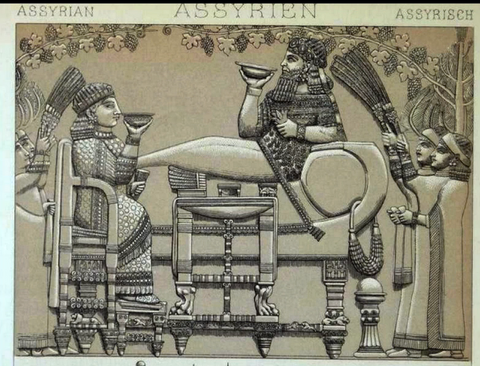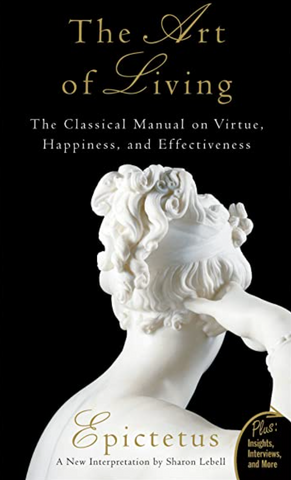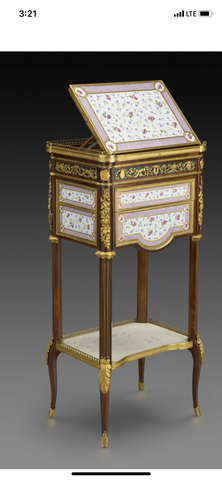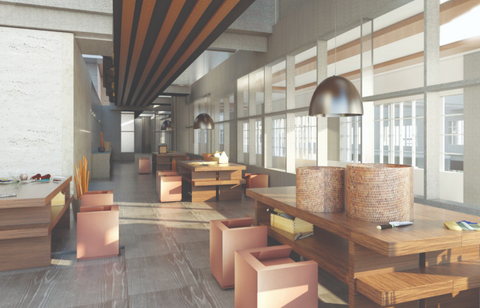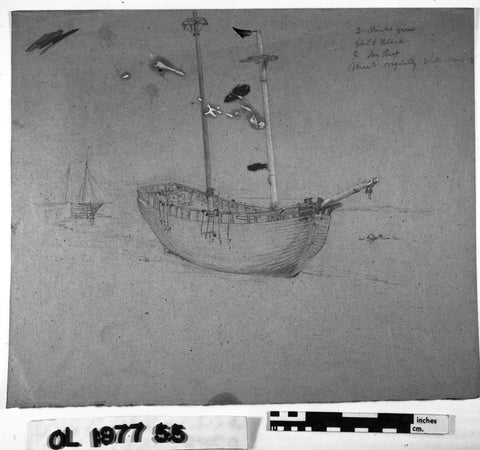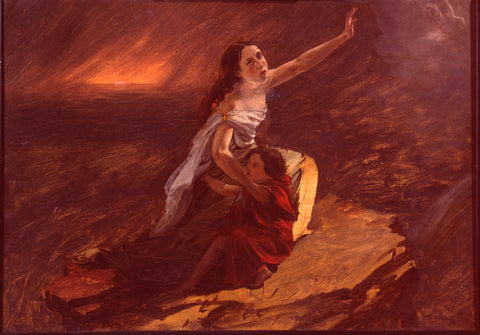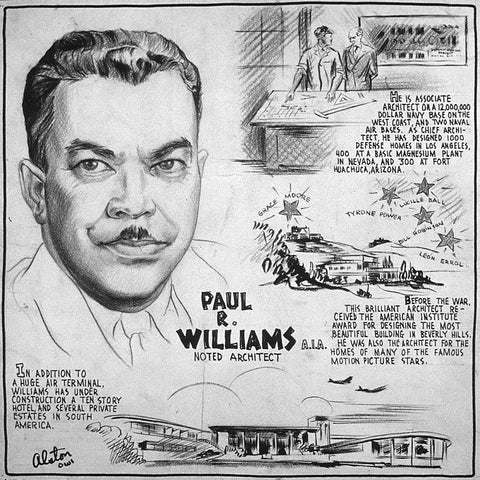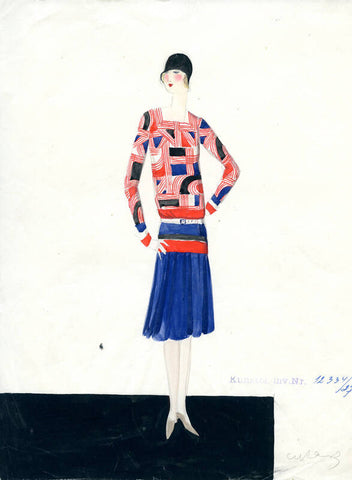A Virtual Study Abroad in Italy
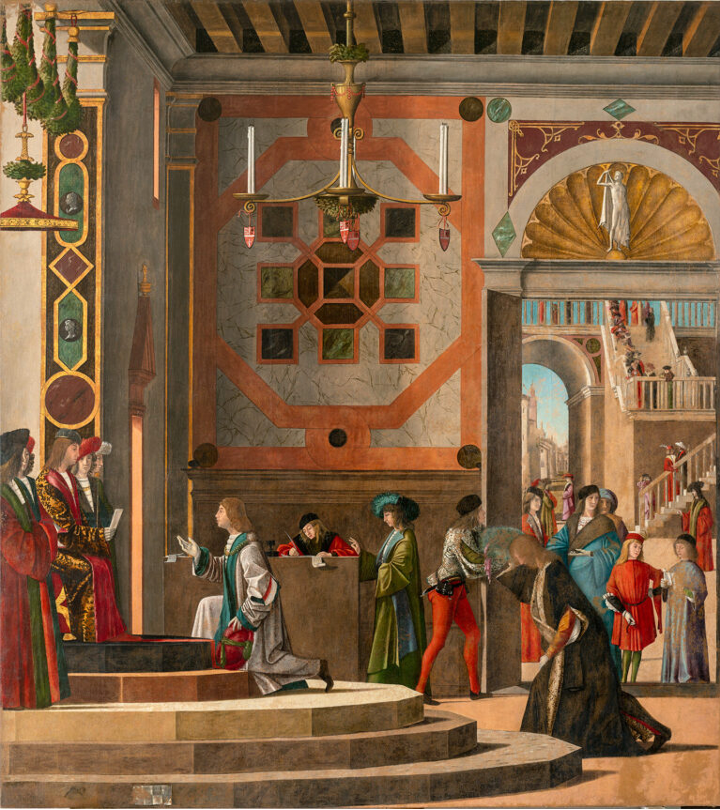
Travel to Italy has captivated me since I was 12 when my parents took me on a trip to Rome, Florence and Venice. I was very fortunate to have been given that experience and I will never forget it. We saw all the “greatest hits”. I remember walking around these cities (we walked everywhere) between The Uffizi, the Accademia Gallery and the Duomo in Florence; the Colosseum, the Pantheon, Piazza Navona and the Trevi Fountain in Rome, and the Basilica of San Marco, the Doge’s Palace and the Peggy Guggenheim Collection in Venice, to name a few. While for many 12-year-olds all these places might have blended together in a memory of tired feet and crowds, I was fascinated. I remember my first time seeing the Sistine Chapel, walking around the Catacombs, and going underground in Basilica San Marco and seeing the water come up at night into the church. I knew then that I wanted to come back and spend more time in Italy.
In college I chose Art History as a major, in large part because of that trip. Because study abroad was not a usual part of the art history curriculum at my school, I had to apply for special permission to study in Italy my junior year. I can still remember the excitement I felt when I was accepted at Studio Arts Center International (SACI). I spent the first half of my junior year sharing a tiny apartment with three other students in Florence. I studied not only the history of Renaissance art and architecture firsthand through on-site learning, but also the materials and methods used by the artists, including oil painting, fresco painting and sculpture. I also learned that what I love most about being abroad in Italy is experiencing her cities the way a local person would: just through daily living, going to the markets, communicating (sort of) in Italian, and adjusting to the schedule of the city. I lived on Via Giraldi, behind the Duomo, and I have taken my husband and my children there to revisit my old home. I hope my children get to have an experience like I did.
As an adult, I continued traveling to Italy. I am different from most students in this course in that I have travelled to Italy for over 30 years, both as an undergraduate on a student budget, and now as an adult with a career, family and more available resources. I am very fortunate as an adult to have been able to explore so much more of this incredible country: Northern Milan, Lake Como, and Lake Garda; Venice and the Alps near Slovenia in Trieste in the west; the east coast with Portofino and Cinque Terre; through Tuscany in the South which includes my favorite towns Siena and San Gimignano; and south to Rome, Capri and the Amalfi Coast. I married a cyclist and so now I have biked through Tuscany and also into the Alps on the border of Slovenia which has shown me a whole new way of appreciating the topography of Italy. Each part of Italy feels so different and I love all the feelings of the many flavors and emotions of this country.
Each one of these places takes my breath away, but one place I return to again and again is Venice. Art is what originally drew me to Italy, and in Venice I found treasures around every corner. Not only are there incredible examples of Italian artists and architects throughout the city, but the city itself with its winding streets and canals is a work of art. My husband and I went to Venice on our honeymoon and have been to Venice 4 times in the last few years. We like going in the fall or winter, without the crowds, and I was lucky to be there in February of this year, just before Italy and particularly that region was devastated by COVID-19. We were there to support an organization called Save Venice, a non-profit that restores art and architecture in Venice. Restoration has always fascinated me since I worked on fresco painting during my junior year abroad in college. I believe in preserving art and history for future generations. My husband and I believe in the mission of Save Venice to restore and support the arts in Venice. We have been lucky to visit several times during two fascinating restoration projects.
The first project with which we were able to spend time behind the scenes during restoration is the Saint Ursula cycle of paintings in the Accademia. This series of 9 canvases was painted by Vittore Carpaccio in the 1490s and illustrates the story of Ursula, a Christian king’s daughter who is betrothed to a pagan prince she does not want to marry. She ends up being martyred as she is returning from a pilgrimage to Rome. The paintings are incredibly detailed and depict realistic characters and scenes of exotic places. The Saint Ursula cycle was closed for restoration between 2016 and the end of 2019. Several paintings had to be restored on site because they were too fragile to roll up and remove from the gallery, so the gallery became a restoration room. The paintings had been covered with varnish, glues and retouching in oil so they looked green and yellow in tone Prior to Save Venice’s involvement, other organizations had attempted to clean off the varnish which only caused further damage. To make it worse, the paintings had severe water damage from their original location. Save Venice sponsored scientific investigation using infrared photography which showed underdrawings beneath the paint and enabled the restorers to understand Carpaccio’s methods of working. During my visit, restorers were painstakingly mixing colors and painting with Q-tips in places where the original oil had flaked off.[1]
The second project is the restoration of the Church of San Sebastiano, which was begun by Save Venice in 2009 and continues today. San Sebastiano is an awe inspiring 16th century church which was in complete disrepair. One of the incredible things about the church is that it contains many frescos and tempera paintings by Paolo Veronese, one of the most famous painters of the Venetian Renaissance in the mid 16th century.[2] The three large ceiling canvases depict the story of Esther, from the Old Testament. He also painted a fresco cycle of prophets and saints from the life of Saint Sebastian. Both the ceiling canvases and the fresco cycle are decorated by surrounding paintings of incredibly detailed floral garlands and fruit, also painted by Veronese. The exterior facades were also restored by Save Venice. The frescos are so fragile that exposure to humidity and salt deposits are threatening so the exteriors of the buildings which contain these masterpieces must also be restored in order to provide protection for the works of art.
I had hoped to return this summer with my family to see the final restoration, as it was just underway when I visited, but of course now that will have to wait. When we are able to travel again, that will be on the top of my list. During this course I have had the opportunity to view Italy in a different lens, without the hustle and bustle of travel and tourism. I have been able to consider the benefits of leaning remotely versus in person, and there are benefits (although I was skeptical). A few of the benefits of learning remotely include the ability to see details of art and architecture up close without any crowds. This was particularly noticeable in churches with details on the ceiling, or high up on the walls, such as the Sistine Chapel, the Basilica of San Clemente and the Basilica of Santa Maria Maggiore. In large churches like these, being able to see the floor, ceiling and walls all together gave me a new sense on how they relate. I also noticed that I could see details better because often the lighting in actual museums is very dark.
Another benefit I noticed as we zipped through Rome is that we could navigate exactly where we wanted to go in seconds! We could visit the Colosseum, the Musei Capitolini, and even some archaeological sites outside of Rome in one morning’s class- something that would take a couple of days in person. There was no need to worry about crowded streets or public transportation. We would also navigate easily from place to place without getting lost and get context from the internet as we went.
I also noticed how well the organization of these museums’ and architectural sites’ websites facilitates learning. For instance, many museums have timelines, so that all objects from the Renaissance are grouped together on the website. I thought the Metropolitan Museum’s website timeline was notable in how they organize history and objects by contextualizing in time and place. It was wonderful to be able to learn the story behind the art or the artist quickly. If we ever wondered what was happening in a particular painting, we could look it up. For instance, in the Villa Farnesina I learned about myths and allegories I had not known about before, in paintings which I have seen many times. Thus, ease of movement between sites, precision of navigation, detailed viewing and breadth of educational materials are some of the benefits of online learning.
Despite these benefits, however, nothing can replace travel abroad. However well websites may organize things for us to look at, we miss out on the experience of losing ourselves in a museum and finding something we wouldn’t know to look for. These technologies can be used to enhance travel, not replace it. I cannot imagine my children not having the opportunity to struggle figuring out how to buy fruit in the market in Florence, how to get money out of the bank in a foreign country, how to interact with strangers and how to make friends who speak another language. Nothing virtual can compare to feeling the sun on your face on the rocks by the Mediterranean sea; or the humid briny smell of being alone in Venice in February walking along canals; or the dusty summer feeling of biking into a vineyard in Tuscany and smelling the scent of grapes fermenting in the damp cellars; or seeing Renaissance and Baroque architecture all around you which is just part of the city in Rome but in America each old building would be seen as something remarkable. Our country is so young and only by visiting one so old can we begin to appreciate history and ancient civilizations.
I am hoping to raise the next generation- my three children- to be able to understand other cultures and do their part to help care for and preserve our world, even in small measure like helping with the restoration of one painting in Venice. Staying isolated in America is not going to be the solution, as wonderful as the technologies are. If my husband and I had not been in Venice, we would not have learned about Save Venice and its mission, and we would not have been able to help. In conclusion, I believe that if one has the opportunity and the resources, visiting another country in person is important for restoration, philanthropy, and understanding different cultures. Only through travel did I really learn how to appreciate another culture and be understanding of other ways of life.
Photographs (all taken on my personal cell phone unless otherwise noted)

Myself as an adult, visiting the Via Giraldi apartment

Meeting of Pope Cyriacus and the Pilgrims, after conservation Tempera and oil on canvas, 305cm x 279cm, Save Venice website

Restorer at work on this paining in the St Ursula Cycle, 4/27/2018

Detail of painting during restoration of St Ursula Cycle, Accademia, Venice, 4/27/2018

Departure of the Ambassadors, after conservation Tempera and oil on canvas, 281cm x 252cm, Save Venice website


Façade of San Sebastiano, 9/24/2018

Veronese Frescoes, Restoration in Progress
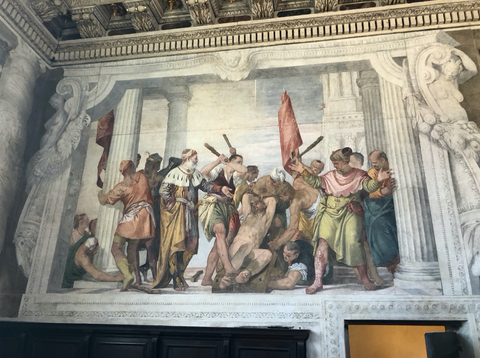
Restored Veronese Fresco in San Sebastiano

Close up of Detaisl, Veronese Fresco

Close up of Details, Veronese Fresco

Restored painted ceilings by Veronese, San Sebastiano, Venice, from Save Venice website

Restored fresco cycle by Veronese, San Sebastiano, Venice, from Save Venice website
Bibliography
“Save Venice Inc.: Dedicated to Preserving the Artistic Heritage of Venice.” Save Venice Inc. | Dedicated to Preserving the Artistic Heritage of Venice, 2020, www.savevenice.org/project/church-of-san-sebastiano.
“Save Venice Inc.: Dedicated to Preserving the Artistic Heritage of Venice.” Save Venice Inc. | Dedicated to Preserving the Artistic Heritage of Venice, 2020, www.savevenice.org/project/saint-ursula-cycle.
[1] “Save Venice Inc.: Dedicated to Preserving the Artistic Heritage of Venice.” Save Venice Inc. | Dedicated to Preserving the Artistic Heritage of Venice, 2020, www.savevenice.org/project/saint-ursula-cycle.
[2] “Save Venice Inc.: Dedicated to Preserving the Artistic Heritage of Venice.” Save Venice Inc. | Dedicated to Preserving the Artistic Heritage of Venice, 2020, www.savevenice.org/project/church-of-san-sebastiano.

